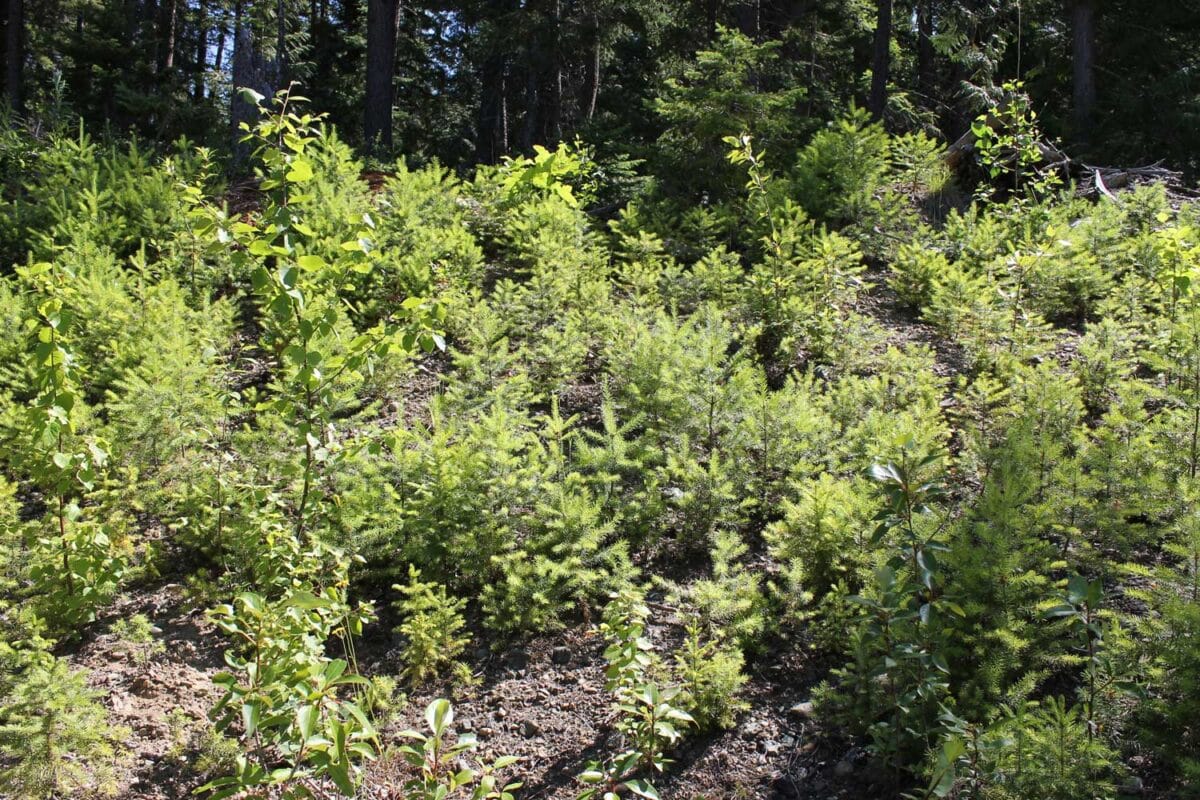Photo credit: Marie Le Bihan
As the Los Angeles, California region continues to grapple with a devastating wildfire crisis, fueled by prolonged drought and record-high winds, forests throughout British Columbia are also facing mounting challenges from climate change.
A new UBC forest and conservation sciences study, published today in Global Change Biology, offers innovative strategies to help forest ecosystems adapt to these evolving climate threats.
“Our findings provide science-based strategies to address one of the most urgent challenges facing forests today: regenerating forest ecosystems that are adaptive to climate change,” says UBC researcher Thomson Harris, lead author of the paper.
The research focuses on interior Douglas-fir, one of Western North America’s most important and valuable tree species. Harris explains, “Douglas-fir is critical not only to B.C.’s economy but also to the health of its forests, making it an essential species in the development of strategies to enhance forest resilience.”
The study explores how different logging methods affect the survival and growth of seedlings in a range of climatic regions where Douglas-fir grows. The research tested a range of forest harvesting intensities, from clear-cutting to retaining increasing densities of overstory trees, and found varying results across the diverse climates in B.C.
This study is unique in that, across the range of harvesting treatments, it also tests how people may move seedlings from their locally adapted environments to different climatic regions as a way of emulating how they may respond to climate change. Moving seedlings will be increasingly important as a tool to help forests keep up with the pace of climate change.
“Seedlings were the most vulnerable to frost and drought stress in clearcuts. Those that were moved to more arid regions benefited from logging methods that retained 30-60% of overstory trees” says Harris. When moved to more humid climates seedlings benefited from fewer (<30%) overstory trees, where there was more sunlight available” says Harris.
Climate models predict that B.C. will increasingly experience hotter, drier summers and warmer, wetter winters, creating unprecedented conditions that could leave many forests struggling to adapt.
“Natural migration, where species shift to new areas over time, is simply too slow to keep pace with the rapid rate of climate change,” explains UBC professor Suzanne Simard, co-author of the paper. “This mismatch puts the species at risk, and assisted migration may help forests adapt.”
Assisted migration, which involves relocating tree populations to areas within their natural range that are better suited to future climate conditions, is explored in the study as a strategy to help trees survive during climate change.
“Moving trees within their natural range must be done cautiously, and this study shows that retaining a portion of overstory trees when logging can increase the success of the migrated seedlings,” Simard adds. “The partial canopy of the old trees shelters the seedlings from climatic extremes such as frost and drought, but the appropriate retention levels needs to be carefully matched to the ecosystem.”





